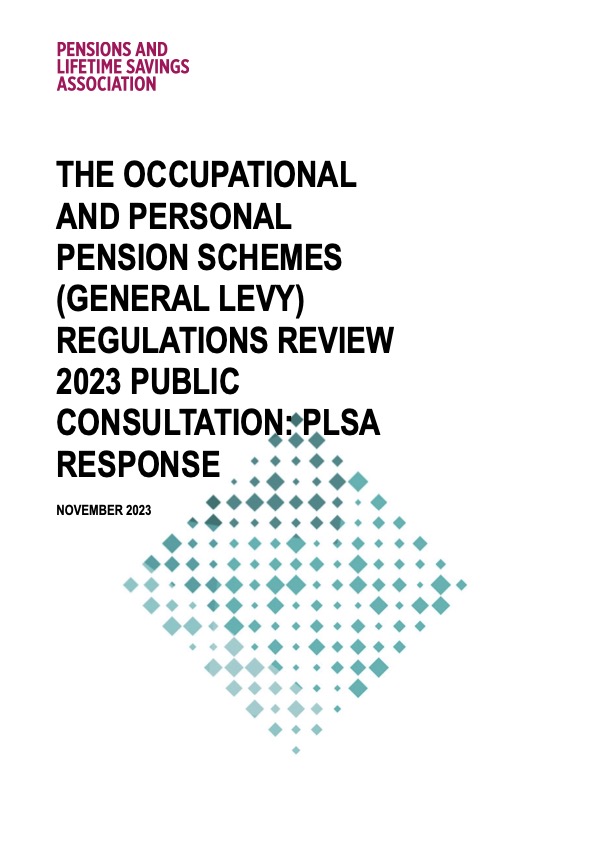The Occupational and Personal Pension Schemes (General Levy) Regulations Review 2023 Public Consultation: PLSA Response

This consultation sought views on potential plans to increase the general levy on occupational and personal pension schemes. This step was taken in light of the ongoing deficit in levy funding.
DWP argue that change needs to be made to the General Levy as “several years growth in our pensions bodies’ activity and previous decisions to delay increasing levy rates, considerable pressure has been put on the levy resulting in a significant deficit. In 2020, a remediation plan was agreed by the Government to remove the deficit by 2030/31”. They go on to argue that, without reform, “the cumulative deficit would reach nearly £205m in 2030/31”.
The General Levy on occupational and personal pension schemes is different from the PPF Levy and the FCF levy. The FCF levy is charged on a per member basis, rather than on AUM. The General Levy indirectly serves as a source of funding for TPR, Pension Ombudsman and MaPS. All three bodies receive grant-in-aid from the DWP, which is reimbursed by levy income. DWP have put foward the following options:
- Option 1 – This option would freeze rates at this year’s rates until 2026/27 and retain the four categories of rate payer: DB schemes, DC schemes other than Master Trusts, Master Trusts, and Personal Pensions schemes.
- Option 2 – Retain the current levy structure and increase rates by 6.5% per year for all schemes in scope.
- Option 3 – Increase rates for all schemes by 4% per year, and from 2026, add an additional premium rate payment for schemes with memberships of under 10,000.